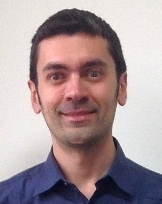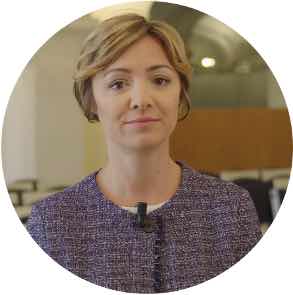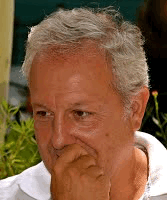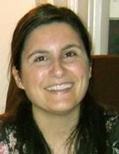Studying at the University of Verona
Here you can find information on the organisational aspects of the Programme, lecture timetables, learning activities and useful contact details for your time at the University, from enrolment to graduation.
Academic calendar
The academic calendar shows the deadlines and scheduled events that are relevant to students, teaching and technical-administrative staff of the University. Public holidays and University closures are also indicated. The academic year normally begins on 1 October each year and ends on 30 September of the following year.
Course calendar
The Academic Calendar sets out the degree programme lecture and exam timetables, as well as the relevant university closure dates..
| Period | From | To |
|---|---|---|
| primo semestre | Sep 28, 2015 | Jan 8, 2016 |
| Secondo Semestre Magistrali | Feb 22, 2016 | Jun 1, 2016 |
| Session | From | To |
|---|---|---|
| appelli sessione invernale | Jan 11, 2016 | Feb 13, 2016 |
| appelli sessione estiva | Jun 6, 2016 | Jul 9, 2016 |
| Appelli sessione autunnale | Aug 29, 2016 | Sep 16, 2016 |
| Session | From | To |
|---|---|---|
| sessione autunnale | Dec 11, 2015 | Dec 18, 2015 |
| sessione invernale | Apr 6, 2016 | Apr 8, 2016 |
| sessione estiva | Sep 13, 2016 | Sep 14, 2016 |
| Period | From | To |
|---|---|---|
| vacanze natalizie | Dec 23, 2015 | Jan 5, 2016 |
| vacanze pasquali | Mar 25, 2016 | Mar 29, 2016 |
| vacanze estive | Aug 8, 2016 | Aug 27, 2016 |
Exam calendar
Exam dates and rounds are managed by the relevant Economics Teaching and Student Services Unit.
To view all the exam sessions available, please use the Exam dashboard on ESSE3.
If you forgot your login details or have problems logging in, please contact the relevant IT HelpDesk, or check the login details recovery web page.
Academic staff
 marcella.veronesi@univr.it
marcella.veronesi@univr.it
Study Plan
The Study Plan includes all modules, teaching and learning activities that each student will need to undertake during their time at the University.
Please select your Study Plan based on your enrollment year.
1° Year
| Modules | Credits | TAF | SSD |
|---|
2° Year activated in the A.Y. 2016/2017
| Modules | Credits | TAF | SSD |
|---|
Two courses to be chosen among the followingTwo courses to be chosen among the following| Modules | Credits | TAF | SSD |
|---|
| Modules | Credits | TAF | SSD |
|---|
Two courses to be chosen among the followingTwo courses to be chosen among the following| Modules | Credits | TAF | SSD |
|---|
Legend | Type of training activity (TTA)
TAF (Type of Educational Activity) All courses and activities are classified into different types of educational activities, indicated by a letter.
Local Economic Development (2016/2017)
Teaching code
4S003742
Academic staff
Coordinator
Credits
9
Language
English
Scientific Disciplinary Sector (SSD)
SECS-P/02 - ECONOMIC POLICY
Period
Secondo Semestre Magistrali dal Feb 27, 2017 al Jun 1, 2017.
Learning outcomes
This course introduces the concepts of Local Economic and Community Development. The course has a multidisciplinary and holistic nature including the study of collective decision-making processes, institutional management, social development, the sustainable use of land and the environment, the functioning of labor and capital markets, and the distribution of resources among gender and generations at the local, regioanl, national and international community level. The course introduces students to the main theories of growth and economic and social development. It also describes the factor markets fostering the development process including also the relevance of public and environmental goods paying special attention to the smart governance of communities, the collective decision making mechanisms, and the sustainable management of land and the environment. Students will learn planning and impact evaluation tools based on the use of social Accounting Matrices augmented to account for information on the employment structure of each economic sector, the impact on environmental sustainability, migration and worker mobility. The course is also based on a wide range of case studies.
Program
Community Economic Development Theory.
1. Defining Community Economic Development.
2. Growth Theory.
3. Space and Community Economics.
4. Concepts of Community Markets.
Community Factor Markets.
5. Land Markets.
6. Labor Markets.
7. Financial Capital Markets.
8. Technology and Innovation.
9. Nonmarket Goods and Services: Amenities.
10. Local Government and Public Goods.
Institutions and the Art of Community Economics.
11. Institutions and Society.
12. Policy Modeling and Decision-Making.
13. The Practice of Community Economic Development.
Tools of Community Economics.
14. Descriptive Tools of Community Economic Analysis.
15. Inferential Tools of Community Economic Analysis: fixed-Price Models.
16. Inferential Tools of Community Economic Analysis: Price: Endogenous Models.
17. Looking to the Future.
| Author | Title | Publishing house | Year | ISBN | Notes |
|---|---|---|---|---|---|
| Phillips, R. and R.M. Pittman | An Introduction to Community Development | Routledge: New York | 2009 | ||
| Shaffer, R., S. Deller and D. Marcouiller | Community Economics: Linking Theory and Practice | Blackwell: Oxford England | 2004 | ||
| Bendavid-Val, A. | Regional and Local Economic Analysis for Practitioners | Prager Publisher, London | 1991 | ||
| Taylor, Ed. and I. Alderman | Village Economies. The Design, Estimation and Use of Villagewide Economic Models | Cambridge University Press, UK. | 2006 |
Examination Methods
50% written exam, 30% exercises, 20% case studies
Type D and Type F activities
Modules not yet included
Career prospects
Module/Programme news
News for students
There you will find information, resources and services useful during your time at the University (Student’s exam record, your study plan on ESSE3, Distance Learning courses, university email account, office forms, administrative procedures, etc.). You can log into MyUnivr with your GIA login details: only in this way will you be able to receive notification of all the notices from your teachers and your secretariat via email and also via the Univr app.
Linguistic training CLA
Gestione carriere
Student login and resources
Graduation
List of thesis proposals
| theses proposals | Research area |
|---|---|
| La (cattiva) gestione dei fondi comunitari in Italia | ECONOMICS - ECONOMICS |
| PMI (SMES) and financial performance | MANAGEMENT OF ENTERPRISES - MANAGEMENT OF ENTERPRISES |
| Analisi dell'Impatto della Regolamentazione: potenziale e applicazioni concrete | Various topics |
| Costs and benefits of the new Turin-Lyon railway line | Various topics |
| Costs and benefits of new systems for speed control on italian motorways | Various topics |
| Contingent valuation for the quality of hospital characteristics | Various topics |
| Evaluating occupational impacts of large investment projects | Various topics |
Internships
Admission policy
ADMISSION POLICY
The admission procedure for international students is explained in details at:
www.magecverona.it/admission-benefits/
For further information please contact magec@dse.univr.it
Additional information
Additional information
For further information visit the program website, http://magec.dse.univr.it, or send an email at magec@dse.univr.it.

 045 802 8278
045 802 8278
















